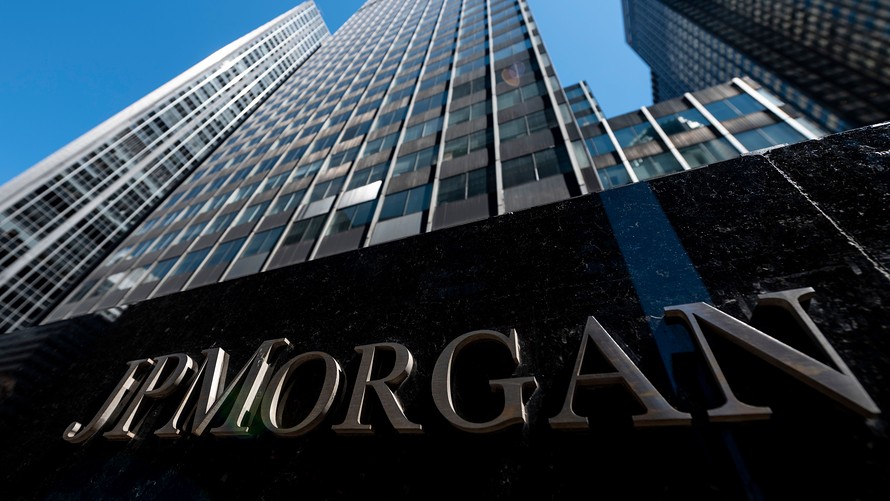
U.S. stocks posted a mixed finish Tuesday as doubts about the extent of import tariff reductions in a trade deal with China saw equities retreat from fresh intraday records for the benchmark indexes.
All three major indexes had rallied to intraday records in earlier trade as earnings season got under way.
What did major indexes do?
The Dow Jones Industrial Average DJIA, +0.11% closed up 32.62 points, or 0.1%, at 28,939.67 while the S&P 500 index SPX, -0.15% lost 4.98 points, or 0.2%, to finish at 3,283.15. The Nasdaq Composite Index COMP, -0.24% ended with a loss of 22.60 points, or 0.2%, at 9,251.33.
During the session, the Dow posted a fresh intraday record of 29,054.16, as did the S&P 500 at 3,294.25 and the Nasdaq at 9298.33.
What’s drove the market?
As part of a U.S.-China trade deal, expected to be signed in Washington on Wednesday, China will pledge to buy $200 billion of U.S. goods over a two-year period in four industries, according to several reports, in return for a lowering of U.S. import tariffs.
However, a Bloomberg report Tuesday afternoon said existing tariffs on Chinese imports would likely stay in place until after the U.S. elections in November and any reduction would depend on Chinese compliance with the terms of the accord.
Earlier stocks were boosted by strong earnings reports from JPMorgan Chase & Co. JPM, +1.17% and Citigroup Inc. C, +1.56%. JPMorgan Chase Chief Executive James Dimon cited a healthy U.S. consumer as a factor that helped it surpass forecasts, along with a stabilization of economic growth and easing tensions over trade policy between the U.S. and China.
However, according to FactSet, overall S&P 500 index company earnings are estimated to have declined 2% in the latest quarter.
“I would be less concerned with the outlook if the market’s 2019 advance was earnings derived,” said Doug Kass, president of Seabreeze Partners Management. “It was not — like in 2013 it was entirely based on a reset of higher valuations (from a PE of 14.5x at year-end 2018 to approximately 19.0x at year-end 2019).
“In 2020, the surprise would be that the “everything bubble” (in which every asset class advanced) is pierced and the notion of mean reversion of returns finally surfaces (just when no one is looking),” Kass said, in a note.
What was on the economic calendar?
The National Federation of Independent Business said its small-business optimism index fell 2 points in December to 102.7.
Consumer prices rose less than expected in December, with the Labor Department’s consumer-price index rising 0.2%. The year-over increase was 2.3%. Core prices, which strip out volatile food and energy costs, also rose 2.3% on an annual pace.
In monetary policy news, the Federal Reserve might have to take back the three interest-rate cuts engineered last year if trends holding down growth ease, said Kansas City Fed President Esther George on Tuesday.
Which companies are in focus?
JPMorgan and Citigroup both surpassed Wall Street expectations for profit and sales and the stocks were up 1.2% and 1.6% respectively Tuesday afternoon. Wells Fargo & Co. WFC, -5.39%, however, missed consensus forecasts for both profit and revenue, with performance dragged down in part by litigation costs, sending shares 5.4% lower.
Delta Air Lines Inc.’s DAL, +3.29% stock gained 3.3% Tuesday topping profit and revenue expectations.
Shares of Tesla Inc. TSLA, +2.49% gained 2.5% Tuesday, setting another record high after Deutsche Bank’s Emmanuel Rosner raise his price target on the stock, the latest in a string of analysts to do so. Tesla has already soared about 29% in January, setting five record closes.
Boeing Inc. BA, +0.65% shares rose 0.7% even though the aircraft maker said in 2019 it delivered half the commercial planes it delivered the previous year and American Airlines AAL, +0.51% pushed back its timeline for when it might fly the Boeing 737 Max again.
Shares of Beyond Meat Inc. BYND, +2.37% rose 2.4% to extend the rocket ride of the past week, but it wasn’t very smooth sailing for investors.
FedEx FDX, +1.79% rose 1.8% after Amazon said sellers on the platform can begin using FedEx’s ground delivery after again after temporarily halting access to the FedEx service during the holiday shopping season.
Perrigo Co. PLC PRGO, +12.60% issued updated guidance for the fourth quarter Tuesday morning, announcing it expects full-year 2019 sales to be $4.8 billion, above the $3.98 billion FactSet consensus. The pharmaceutical company’s stock rose 12.6%.
How are other markets trading?
U.S. Treasury yields slipped Tuesday following a subdued reading on consumer price inflation. The yield on the 10-year U.S. note TMUBMUSD10Y, -0.24% fell 2.9 basis points to 1.817%.
Oil futures settled higher snapping a five-day losing streak that dragged the U.S. benchmark to its lowest level since early December. West Texas Intermediate crude for February delivery CLG20, -0.27% rose 15 cents, or 0.3%, to $58.23 a barrel.
Gold prices on Tuesday finished lower, suffering their fourth loss in five sessions, as upbeat reports from U.S. banks, muted signs of inflation and continued progress toward a Sino-American trade pact dulled demand for haven-related assets. Gold for February delivery GCG20, +0.50% on Comex lost $6, or 0.4%, to settle at $1,544.60 an ounce.
European stocks on Tuesday inched higher. After losses for two straight sessions, the Stoxx Europe 600 SXXP, +0.29% edged up 0.3% to 419.59, not far from the record close of 419.74 reached on Dec. 27.
In Asia, Japan’s Nikkei NIK, -0.59% gained 0.7% as traders returned from a holiday Monday. Hong Kong’s Hang Seng Index HSI, -0.85% slipped 0.2% t while China’s CSI 300 000300, -0.78% index slipped 0.3%.























